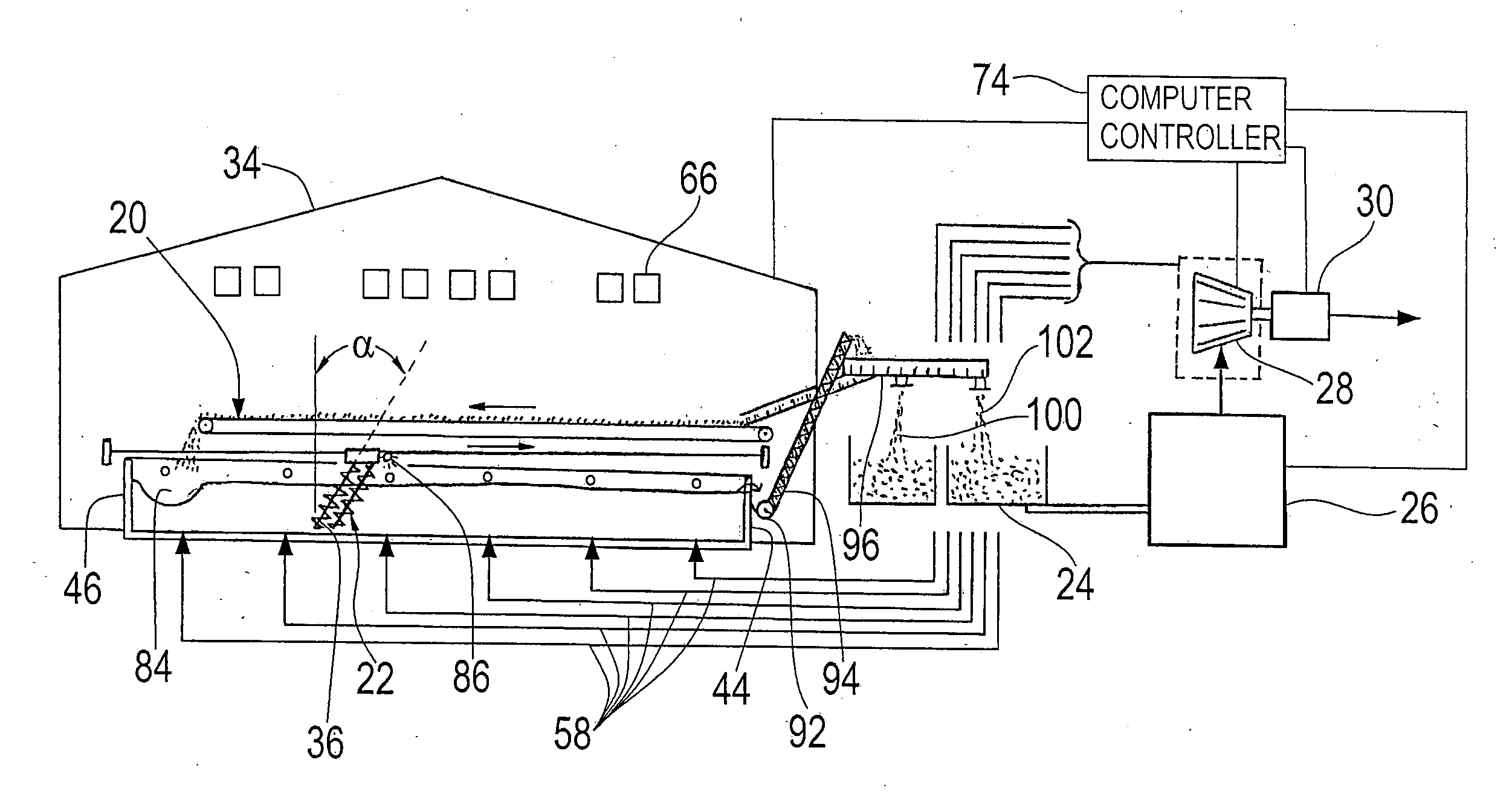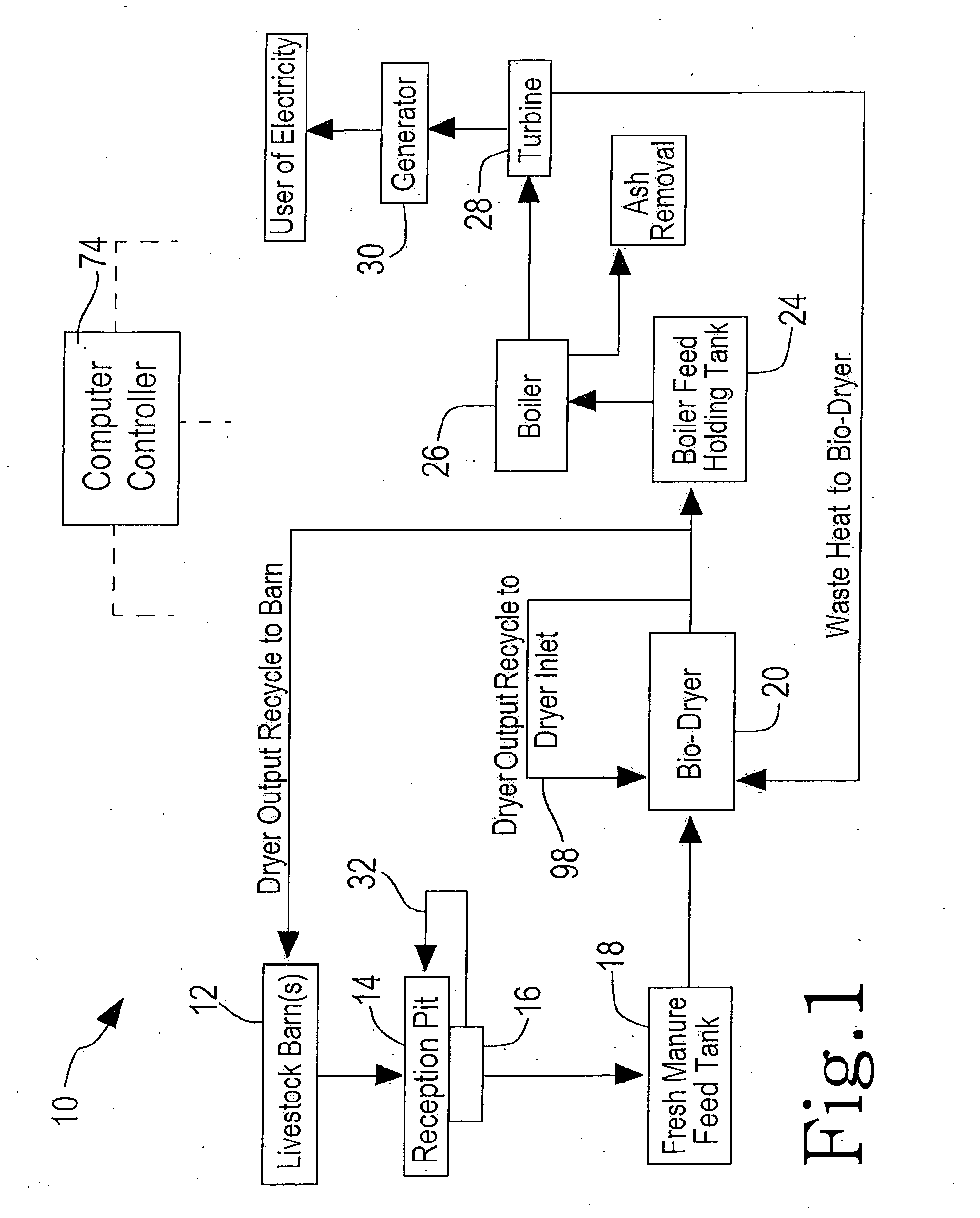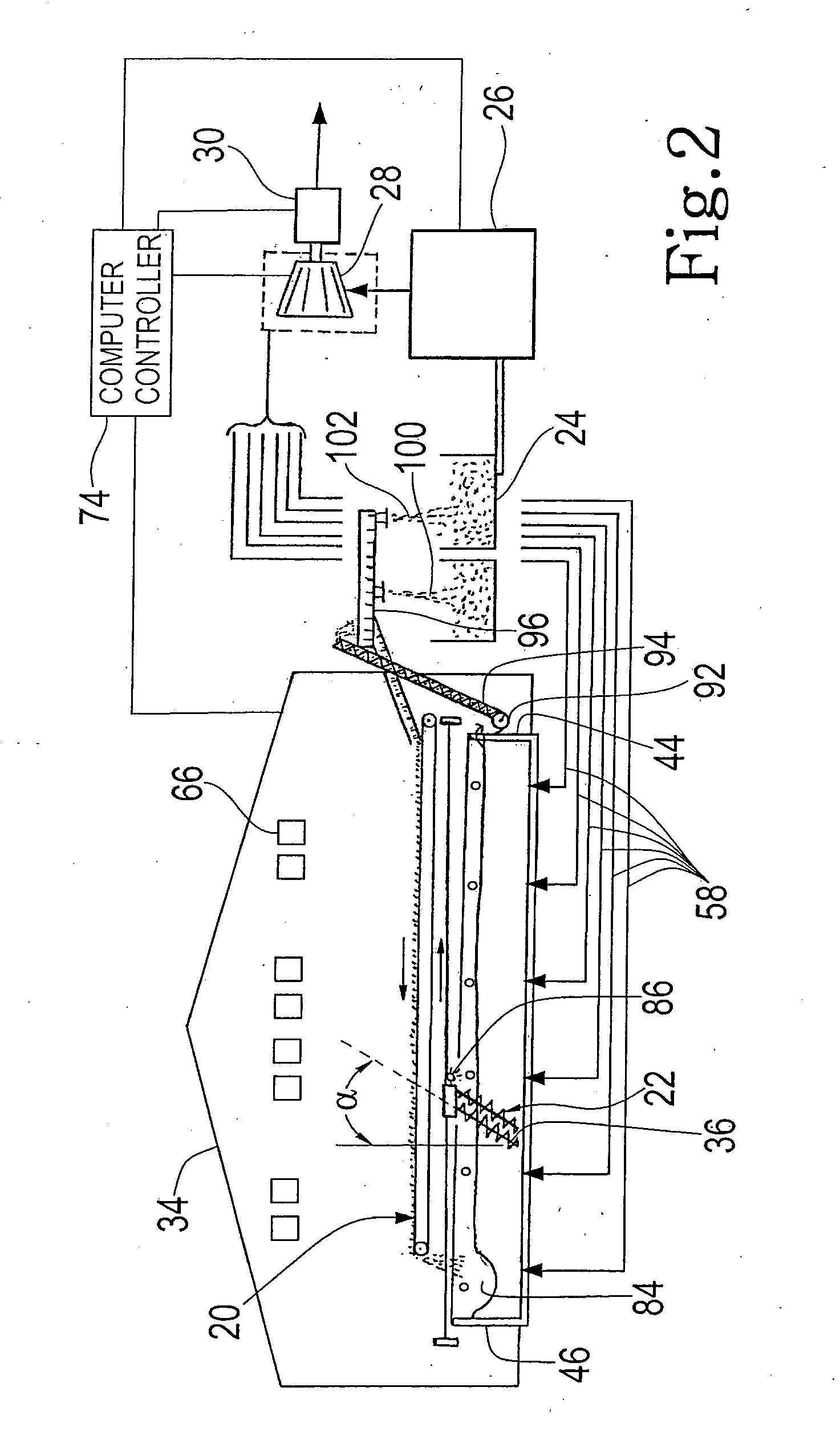Biomass converters and processes
a technology of biomass converters and processes, applied in the direction of drying machines with progressive movements, drying machines with non-progressive movements, energy input, etc., can solve the problems of polluting water resources, nutrient in the amount of manure produced exceeding the nutrient-carrying capacity, etc., and achieve the effect of reducing or eliminating the problem
- Summary
- Abstract
- Description
- Claims
- Application Information
AI Technical Summary
Benefits of technology
Problems solved by technology
Method used
Image
Examples
Embodiment Construction
[0055]Referring to FIG. 1, in an exemplary manure management system 10 of the invention, the manure, at about 86% by weight water and 14% by weight solids, is collected at the originating source, such as a livestock barn 12, and conveyed to a reception pit 14. From reception pit 14, the manure is pumped, through a chopper pump 16, to one or more fresh manure feed tanks 18. From feed tank 18, the manure is pumped into a bio-dryer 20 where the moisture content is reduced, by water evaporation, from about 86 percent by weight water to about 40 percent by weight water. In the process, the total mass of the manure product is reduced, by water evaporation, by about 77 percent. Bio-dryer 20 has an aerated floor and first and second mixers such as augers 22 (FIG. 2) which mix the manure so as to facilitate drying of the manure, and to develop consistency in texture and moisture content of the dried manure product. The mixers optionally also introduce additional air into the mass of the manu...
PUM
| Property | Measurement | Unit |
|---|---|---|
| angle | aaaaa | aaaaa |
| water content | aaaaa | aaaaa |
| total wet weight | aaaaa | aaaaa |
Abstract
Description
Claims
Application Information
 Login to View More
Login to View More - R&D
- Intellectual Property
- Life Sciences
- Materials
- Tech Scout
- Unparalleled Data Quality
- Higher Quality Content
- 60% Fewer Hallucinations
Browse by: Latest US Patents, China's latest patents, Technical Efficacy Thesaurus, Application Domain, Technology Topic, Popular Technical Reports.
© 2025 PatSnap. All rights reserved.Legal|Privacy policy|Modern Slavery Act Transparency Statement|Sitemap|About US| Contact US: help@patsnap.com



